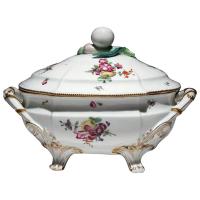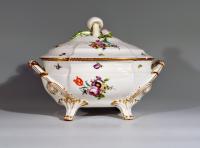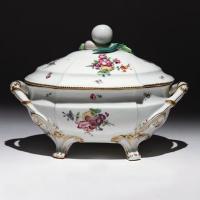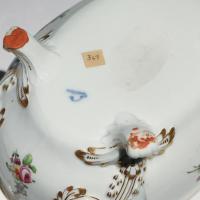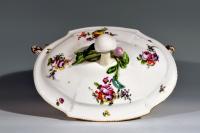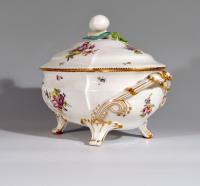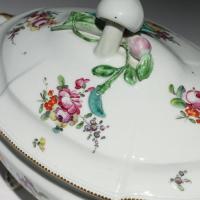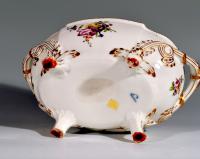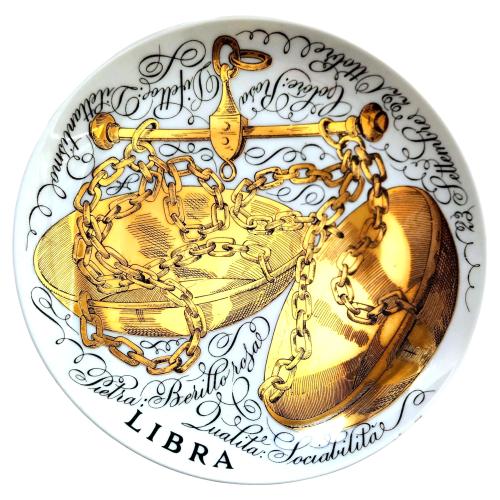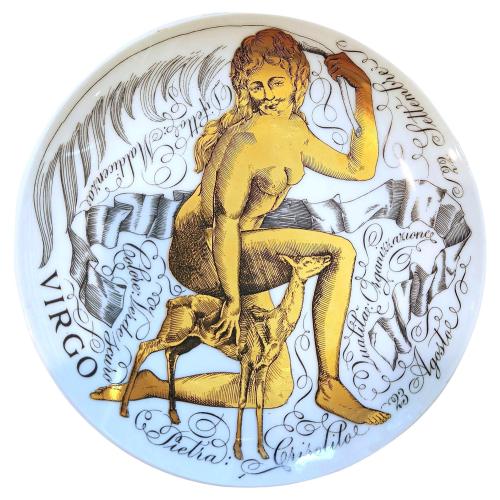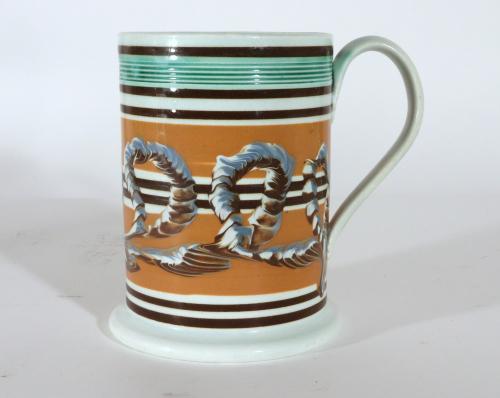
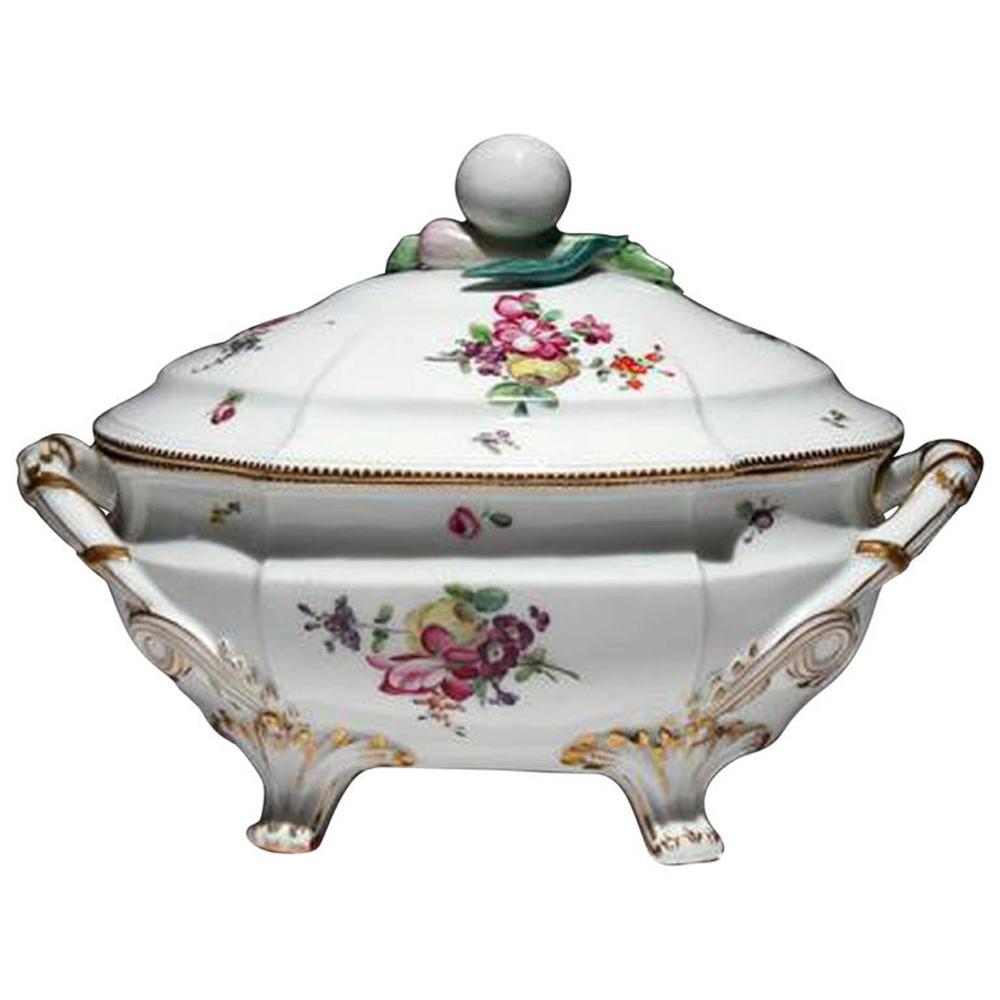
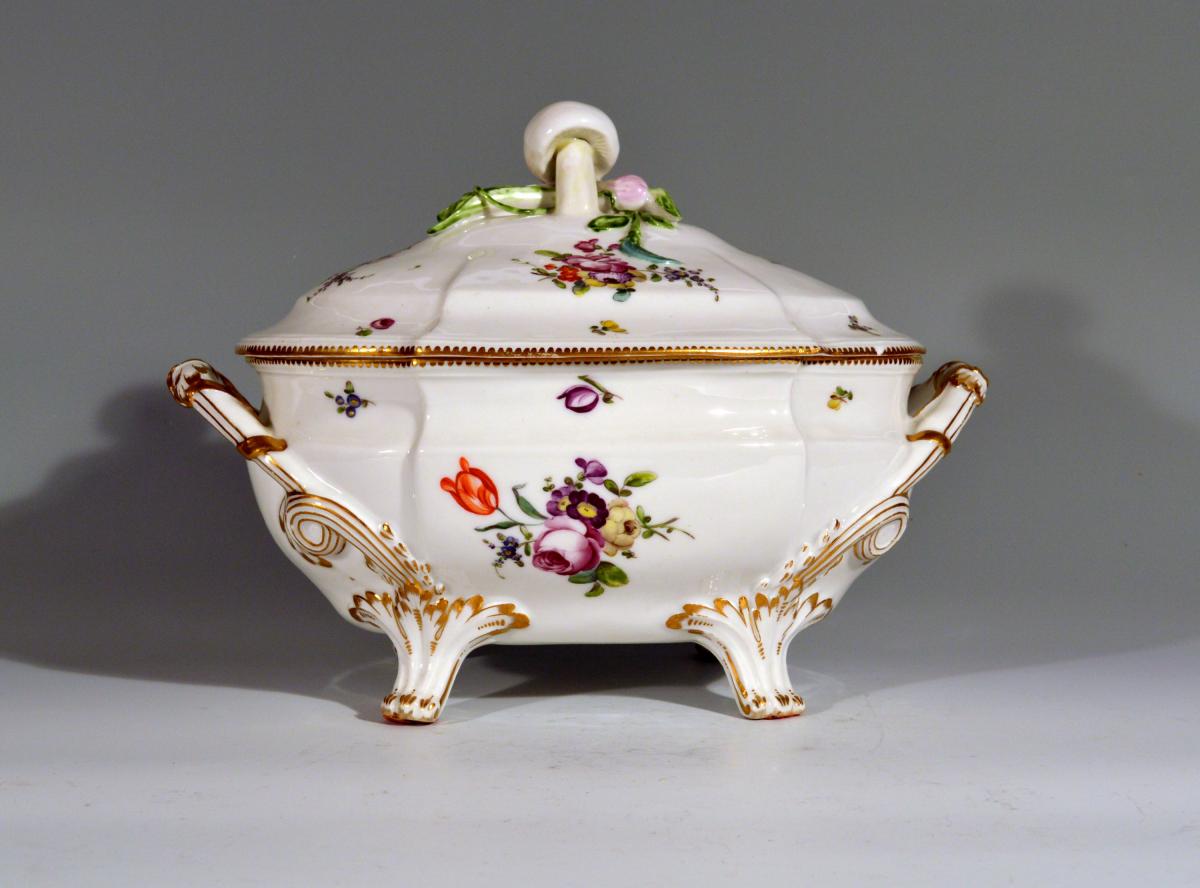
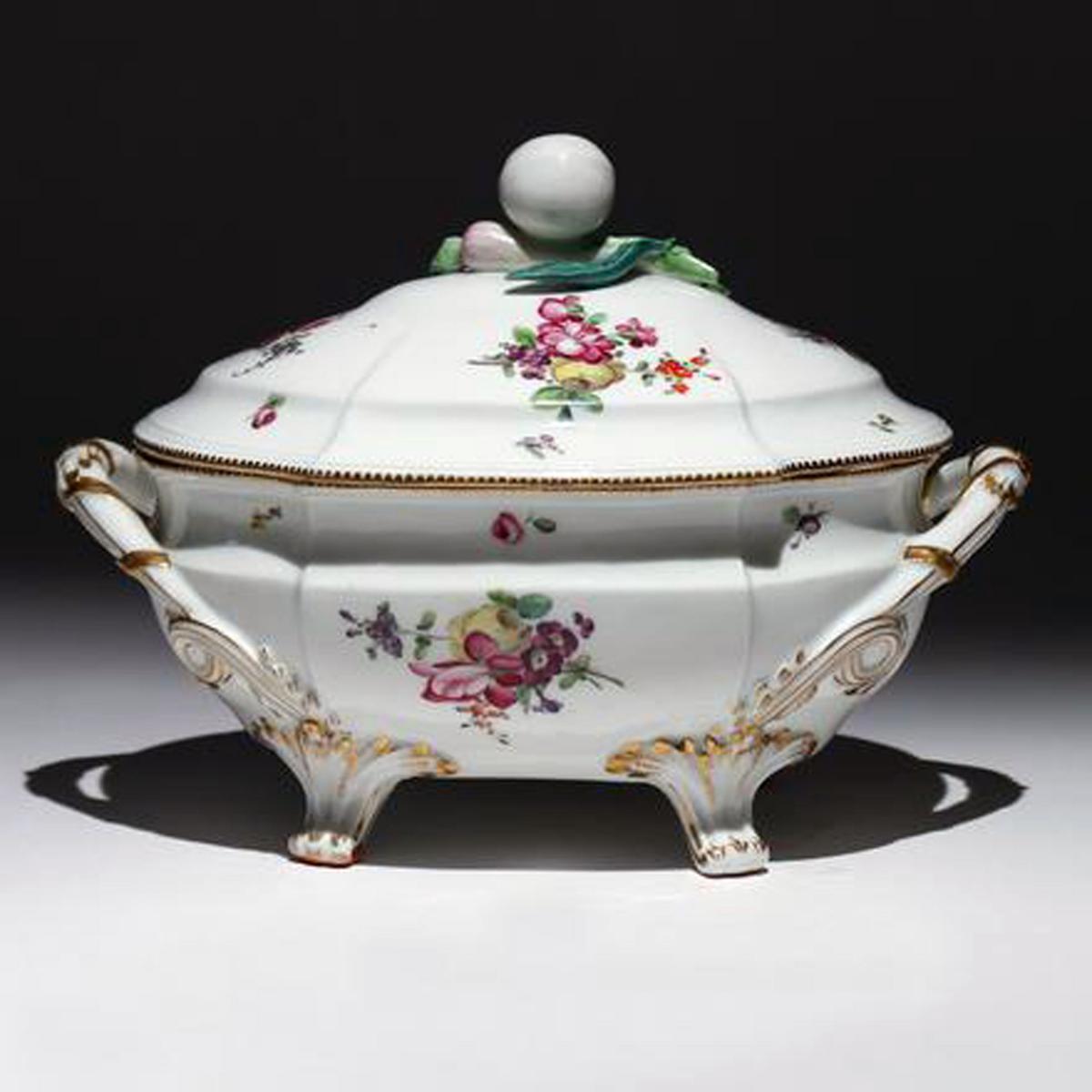
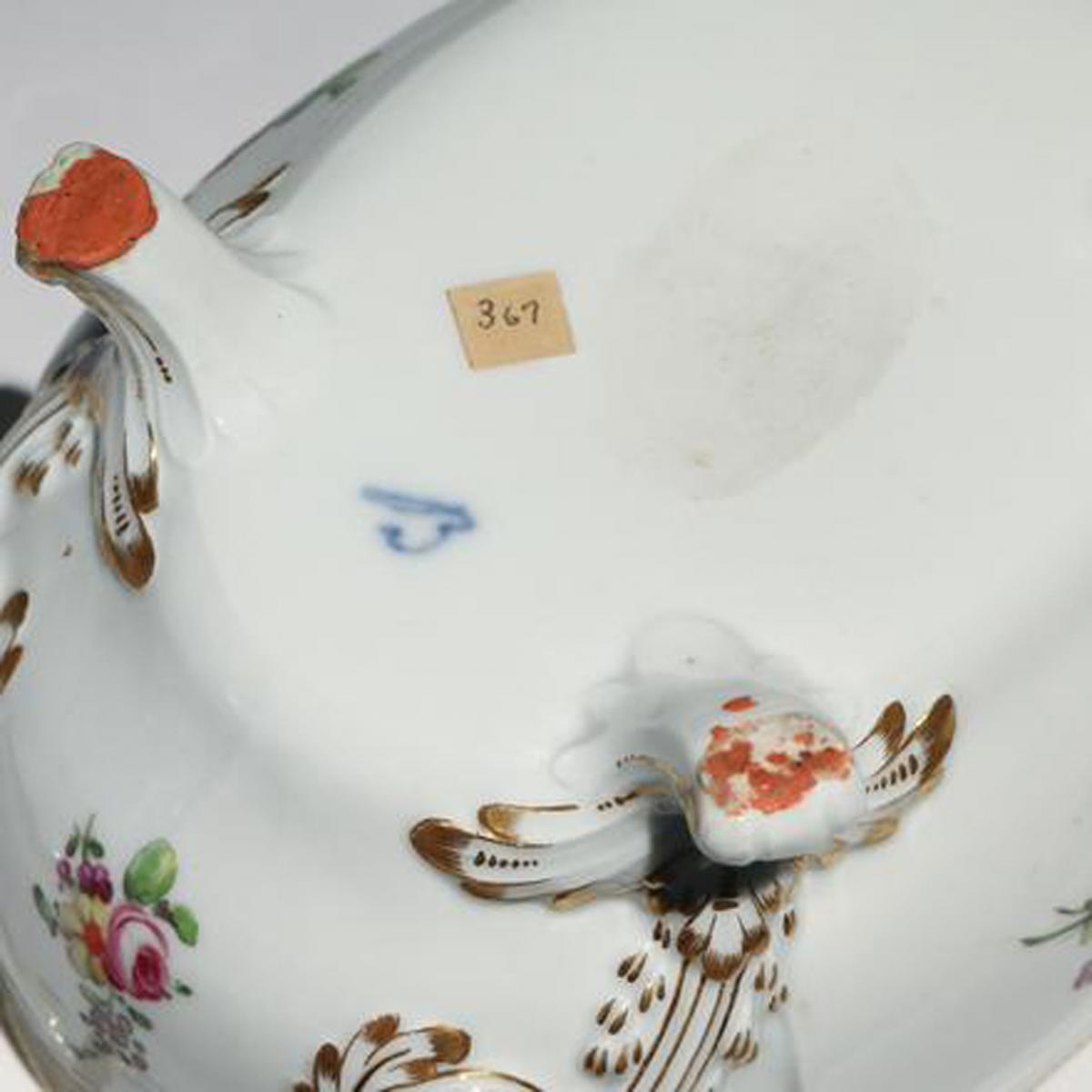
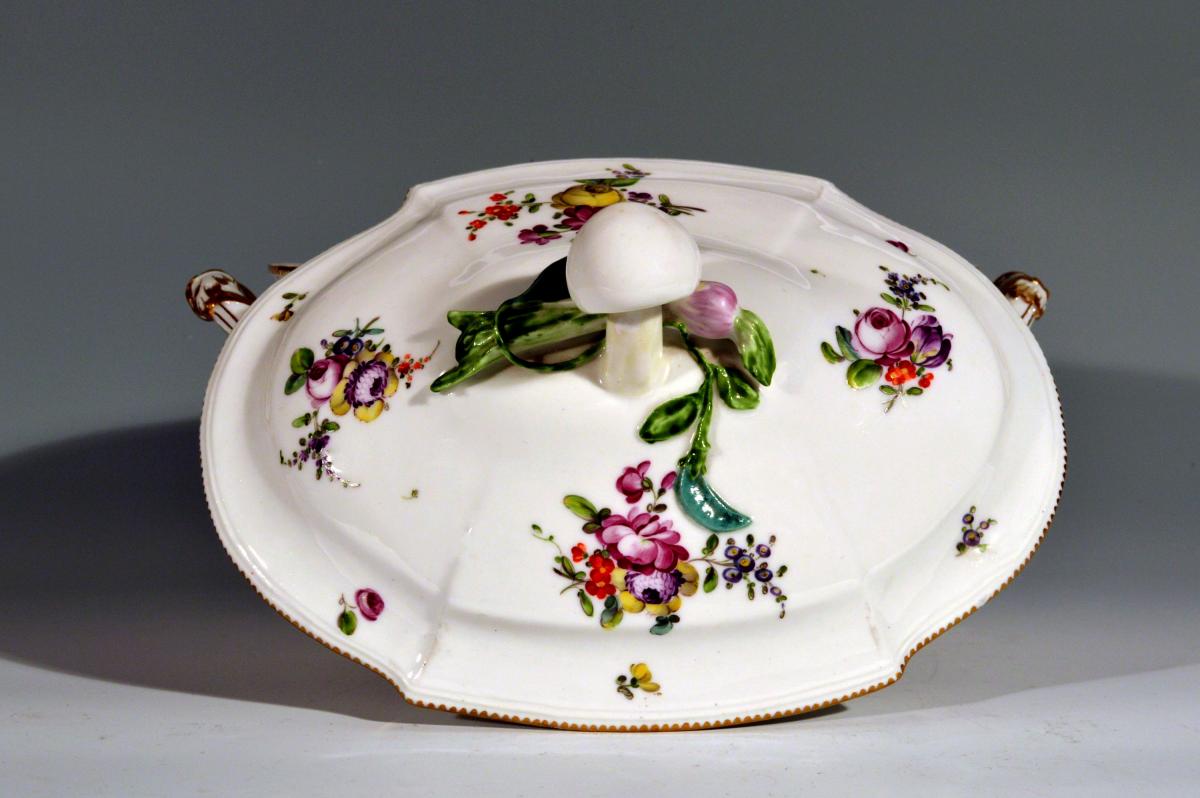
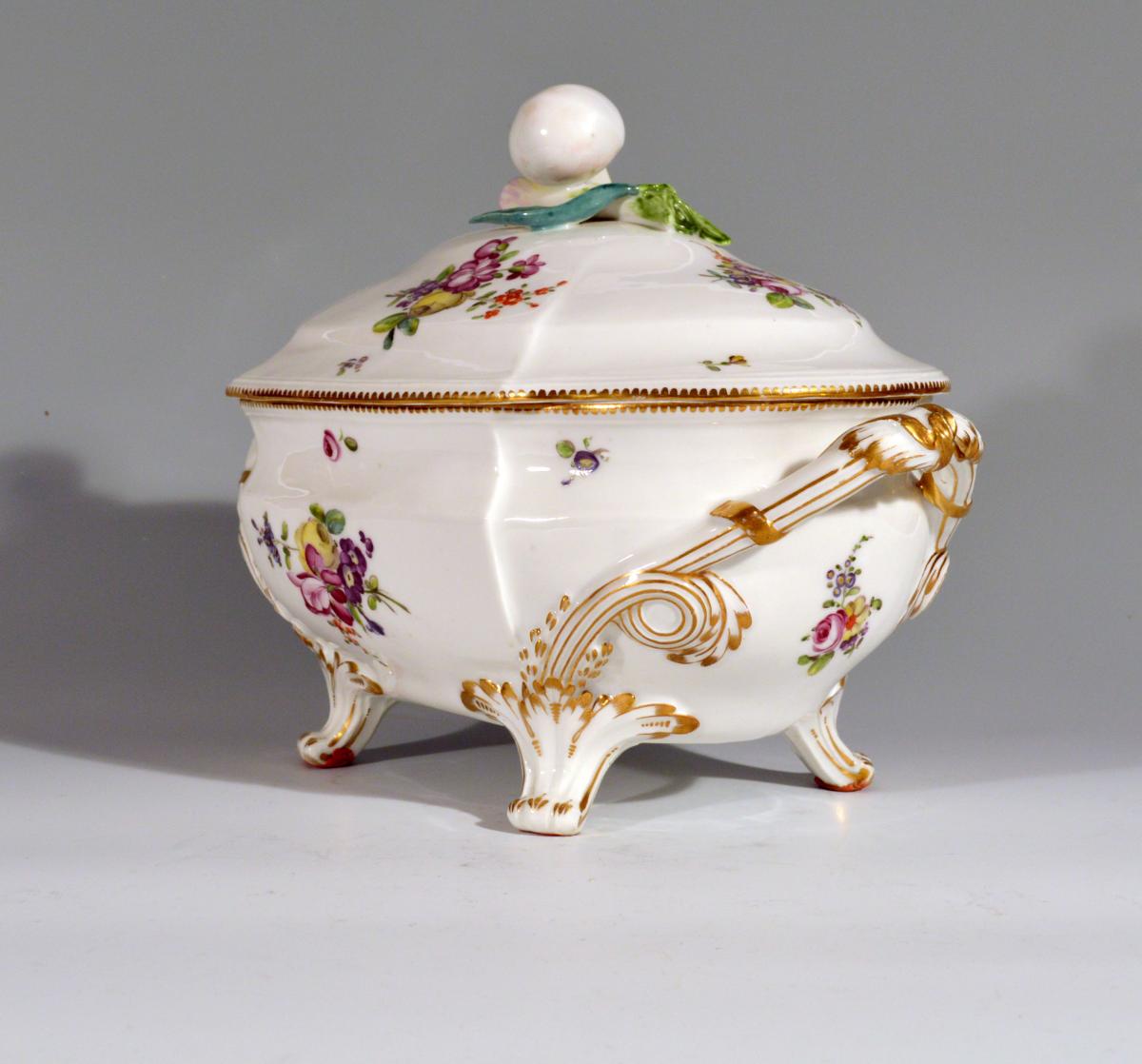
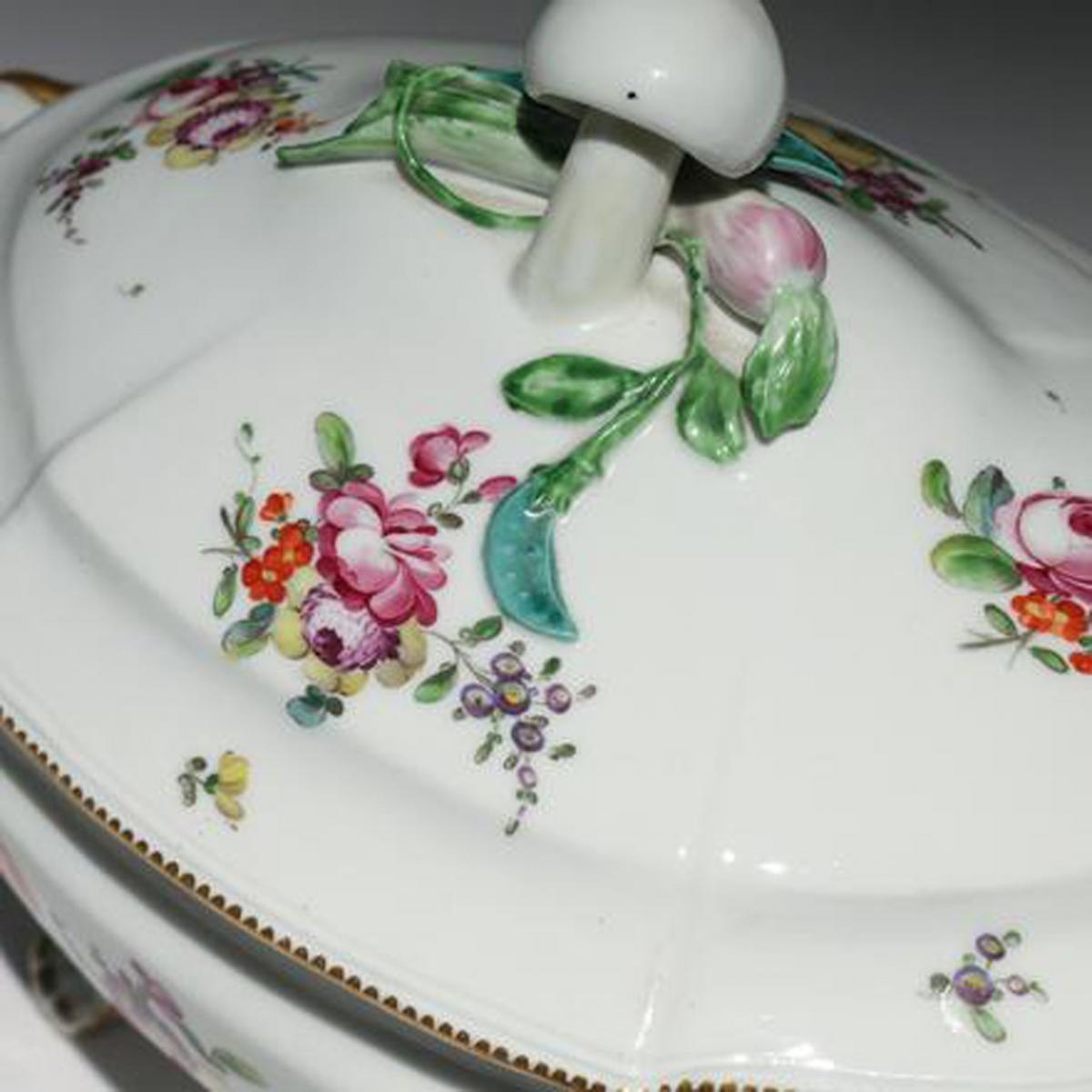
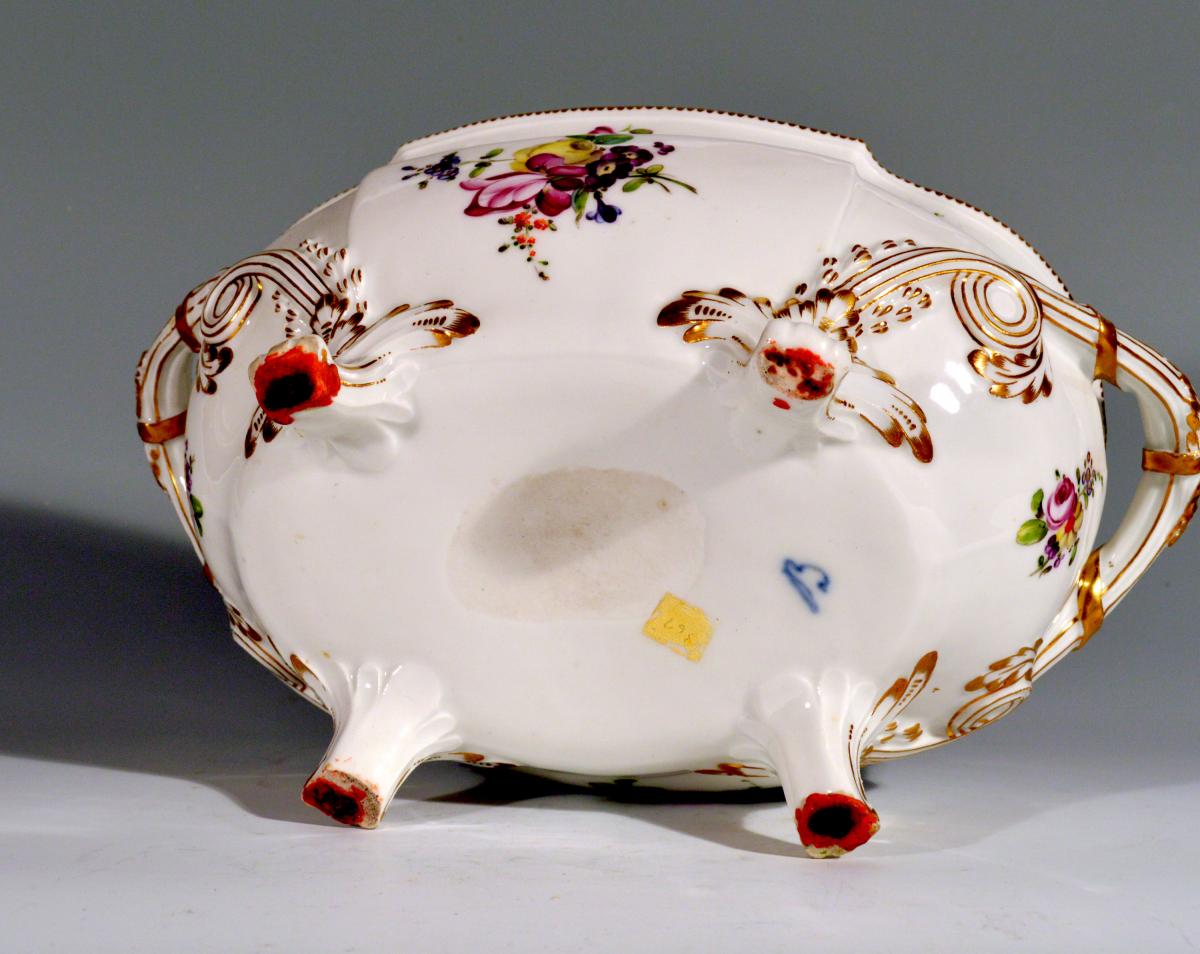
This object is eligible for a Certificate of BADA Provenance
The BADA Standard
- Since 1918, BADA has been the leading association for the antiques and fine art trade
- Members are elected for their knowledge, integrity and quality of stock
- Our clients are protected by BADA’s code of conduct
- Our dealers’ membership is reviewed and renewed annually
- Bada.org is a non-profit site: clients deal directly with members and they pay no hidden fees
French Porcelain Soup Tureen and Cover.
Boissettes Factory.
Jacques Vermonet and Fils, Boissette, (Duke d'Orleans).
Circa 1780.
The rare elegant and stylish tureen, after the Sèvres, rises on four flared feet and is well painted with bouquets of flowers (Bouquet détaché) to each side and with scattered flowers throughout.
The finial is in the form of moulded vegetables, in the form of a mushroom and a radish. The terminals of the feet, handles, and rim are highlighted in gold.
Mark: script B in underglaze blue.
Dimensions: 8 1/2 inches deep x 11 1/2 inches x 7 1/2 inches high.
Examples from this rare factory can be found in the V & A, London and The Gardiner Museum, Toronto.
Reference:
Ceramics: 400 Years of British Collecting in 100 Masterpieces, Patricia F. Ferguson, Page 110-111 for a Sèvres tureen with almost identical feet and handles and similar floral decoration.
French Porcelain, Aileen Dawson, Page 301, for discussion on the Boisette factory. The author notes that little is known at present about the hard paste porcelain factory near Melun (Seine-et-Marne), around 32 km (20 miles) from Paris.
"No record of the registration of any factory mark has been discovered and doubts have been expressed as to whether the underglaze blue script B mark cn be attributed to Boissettes. In the absence of a plausible alternative, however, it is currently considered to be the mark of this concern."
Jacques Vermonet and Fils, Boisette, France.
(http://www.boissettes.fr/patrimoine).
A small ceramics factory was established in the village of Boisette. Initially the backers and associates were the Joly spouses who began to manufacture white-colored ceramics. Before 1775 a relatively small number of pieces left the factory because of financial problems leading to the withdrawal of partners, debts, the suspension of the activity for more than ten years.
In 1776 the Vermonet father and son acquired the pottery and transformed it to make porcelain which for three years seemed to benefit from the protection of Duke Louis Philippe d'Orléans who has just acquired the château de Sainte-Assise at Seine-Port. It was undoubtedly the lack of profitability and a risky management which were the causes of the cessation of activity on August 23, 1781.
During these six years, pieces of common dishes were produced, but also more ambitious pieces (statuettes - ornamental vases) or rare (hot plates). Delicate artists, also working in Sceaux and Mennecy created a wide range of objects and subjects.
From this short period of production pieces of tableware recognizable by a B in cursive blue, black or purple.
Dimensions
21.59cm deep x 29.21 cm wide x 19.05cm highCondition report
Excellent but one spot of gilt loss to cover rim as seen in photo.Stock number
NY9091The BADA Standard
- Since 1918, BADA has been the leading association for the antiques and fine art trade
- Members are elected for their knowledge, integrity and quality of stock
- Our clients are protected by BADA’s code of conduct
- Our dealers’ membership is reviewed and renewed annually
- Bada.org is a non-profit site: clients deal directly with members and they pay no hidden fees


